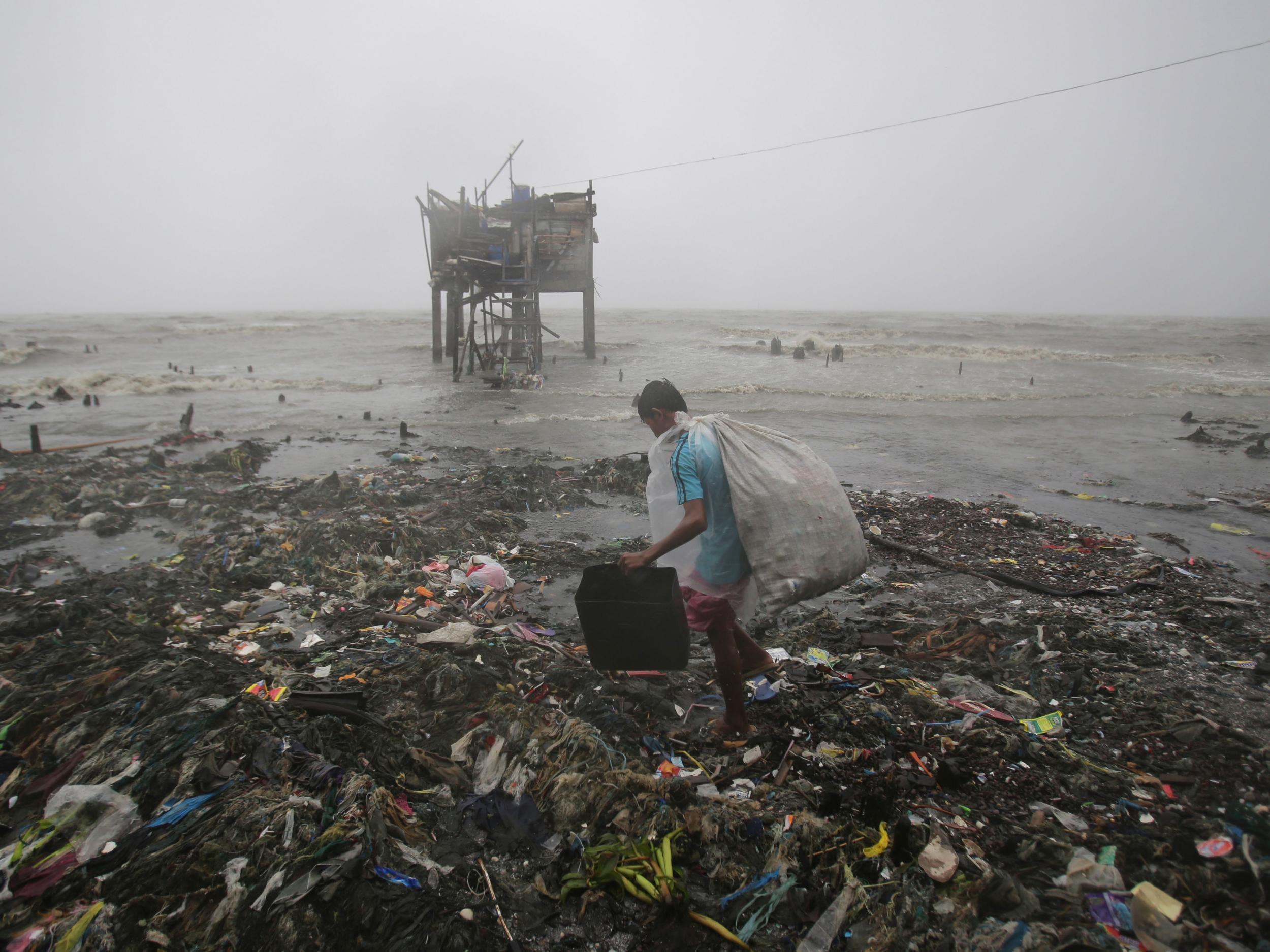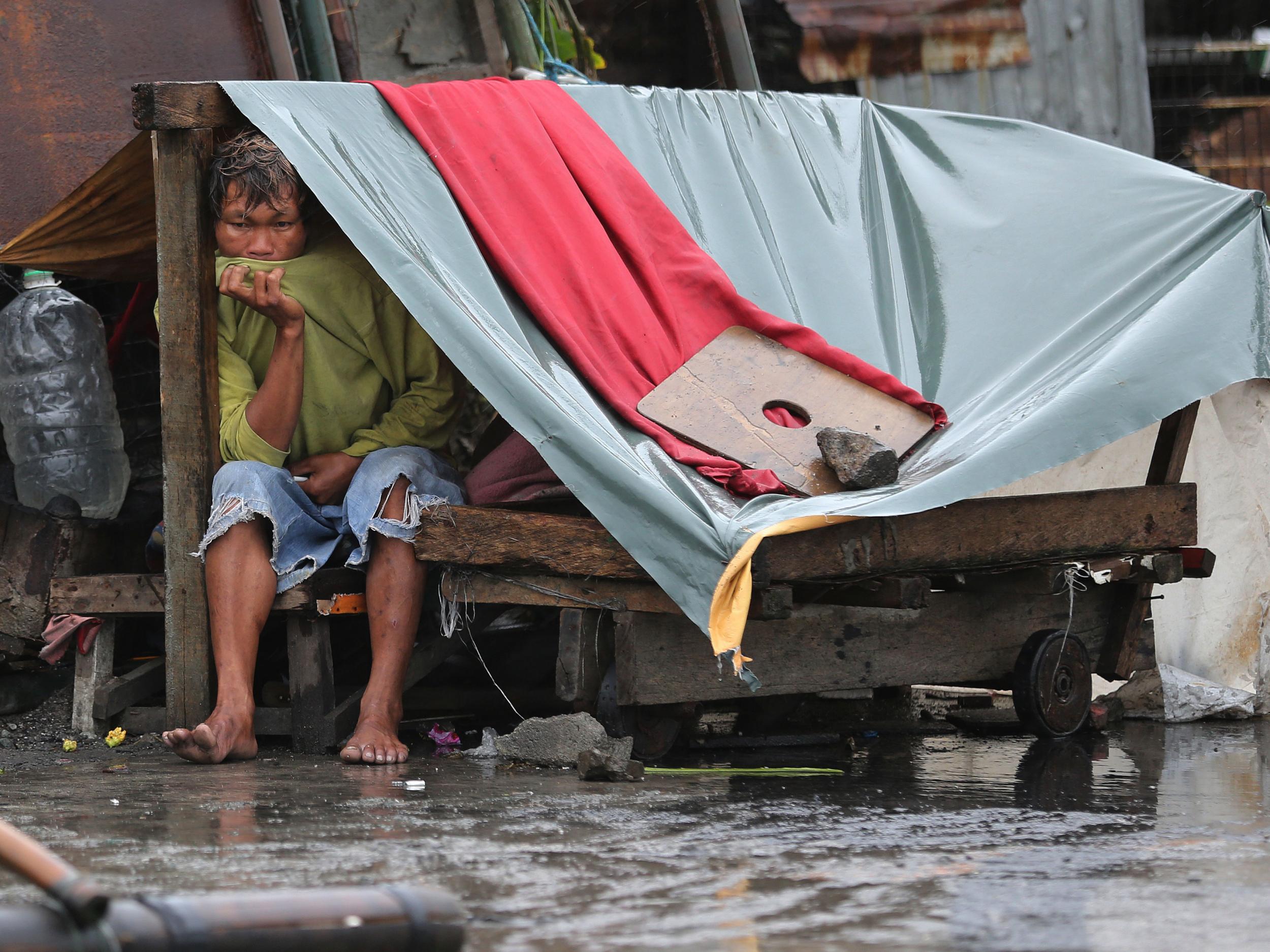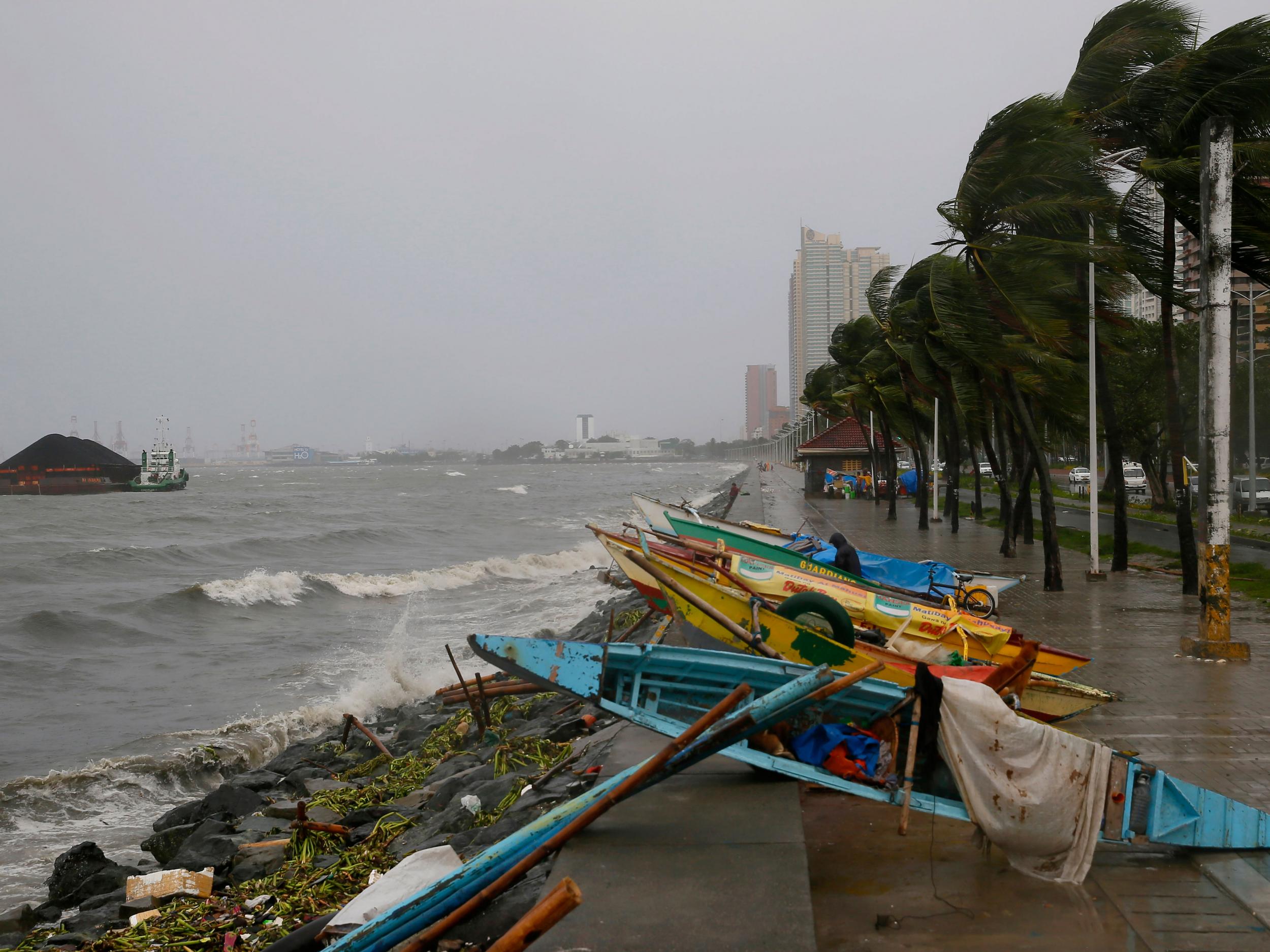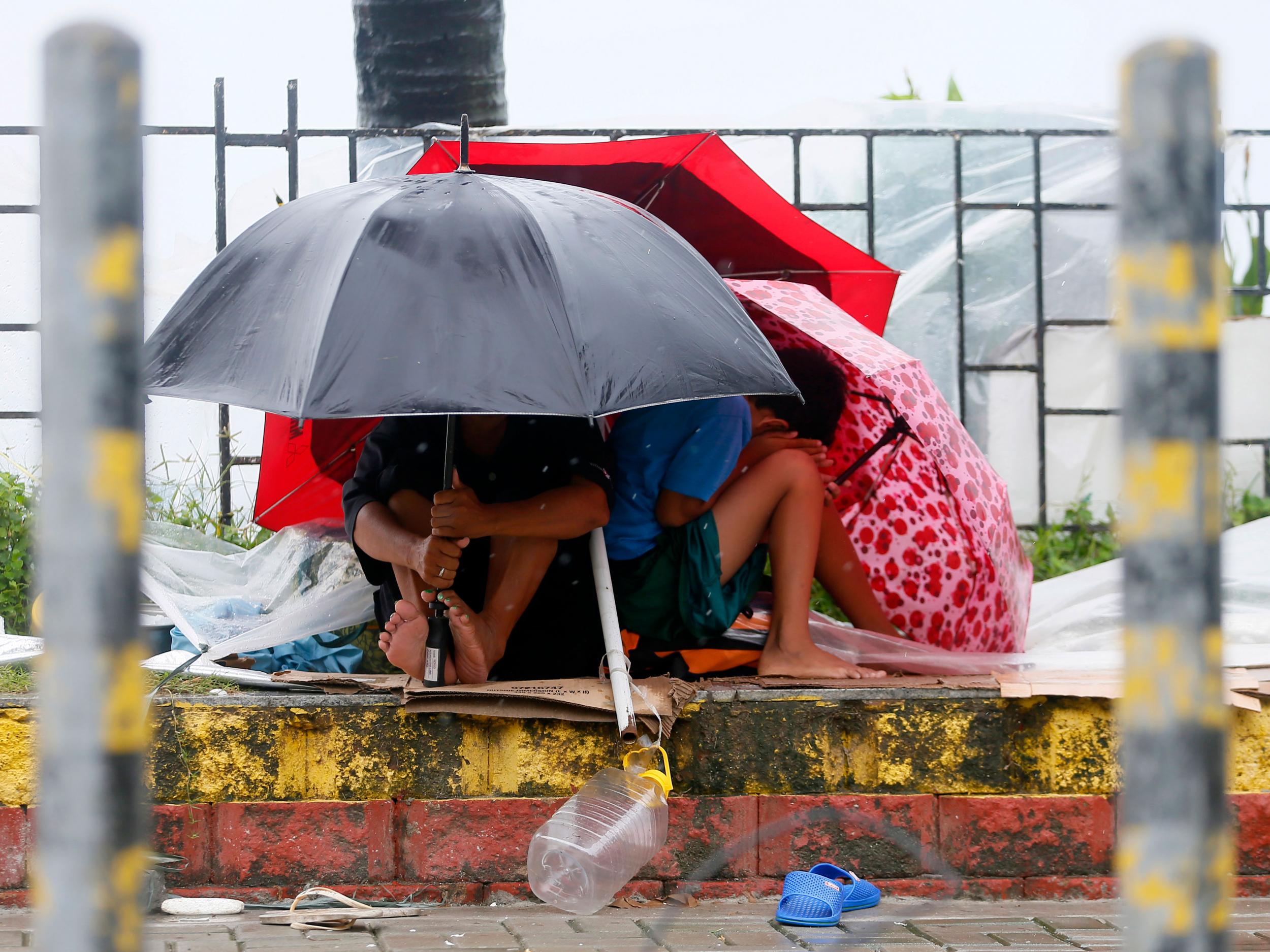Typhoon Koppu: Thousands evacuated as vicious winds and rain hit northern Philippines
7.5 million people are in need of relief assistance

Your support helps us to tell the story
From reproductive rights to climate change to Big Tech, The Independent is on the ground when the story is developing. Whether it's investigating the financials of Elon Musk's pro-Trump PAC or producing our latest documentary, 'The A Word', which shines a light on the American women fighting for reproductive rights, we know how important it is to parse out the facts from the messaging.
At such a critical moment in US history, we need reporters on the ground. Your donation allows us to keep sending journalists to speak to both sides of the story.
The Independent is trusted by Americans across the entire political spectrum. And unlike many other quality news outlets, we choose not to lock Americans out of our reporting and analysis with paywalls. We believe quality journalism should be available to everyone, paid for by those who can afford it.
Your support makes all the difference.Thousands have been evacuated, homes have been flattened, power lines have collapsed and roads blocked as Typhoon Koppu descended on the northern Philippines.
Alexander Pama, head of the government's main disaster agency, said more than 14,000 villagers have been evacuated from the typhoon’s path, but no casualties had been reported so far.

Air and ferry services in the north have been cancelled and bus services in mountain areas have been suspended due to landslide threats, according to the BBC.
Around 7.5 million people are in need of relief assistance following the mass-evacuation of residents from high-risk regions, the country's president, Benigno Aquino III, said.
The slow-moving typhoon weakened slightly on Sunday after pummeling the town of Casiguran in the Aurara province shortly after midnight, government forecaster Gladys Saludes said.
By midday, the typhoon had blown westward and further inland over Nueva Ecija, east of Aurora, with gusts of up to 115 miles per hour.

The typhoon is moving at a slow pace of around 3 miles per hour, said acting weather bureau chief Esperanza Cayanan, shifting from a westward course to one veering towards the north.
It is expected to exit from the main Luzon island by Wednesday, if it continues to move at its current pace.
Satellite images appeared to show the typhoon losing its eye, which is a sign of diminishing strength, according to Ms Cayanan.
Despite this, three days of torrential rain is expected, which could trigger major flooding and landslides. Residents in landslide and flood-prone villages in Kuppo’s path have been evacuated by authorities.
As the weather begins to improve in some Aurora towns, villagers began to clear roads of fallen trees and debris, however officials have warned that Kappu still has the potential to spark landslides and flash floods.
"It's still typhoon intensity ... there's still danger," Ms Cayanan told a news conference. "We shouldn't be complacent."
Mr Aquino and disaster response agencies have warned Koppu’s rain and wind may bring more damage due to its slow speed.
However, there has been less heavy rain than expected in some areas, including in the capital Manila.

Koppu, Japanese for “cup”, is the twelfth storm to hit the Philippines this year.
In November 2013, Typhoon Haiyan, hit central Philippines, leaving 7,300 dead or missing.
Additional reporting by Associated Press
Join our commenting forum
Join thought-provoking conversations, follow other Independent readers and see their replies
Comments